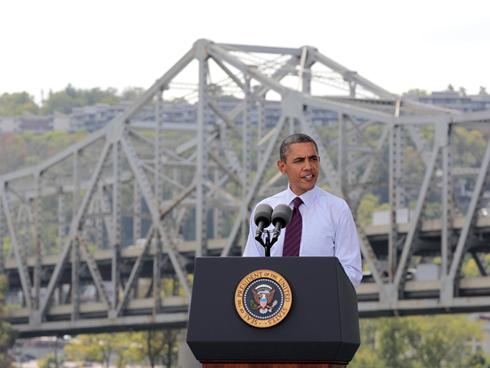Just days after Congress passed a bill allowing states to spend funds supposedly designated for biking and walking on completely unrelated projects, transportation officials are already circling like vultures over that money.
An AP story from Covington, Kentucky on Sunday quotes several transportation officials and executives parroting the GOP line that transportation enhancements funding, as that pot of money used to be called, is used for "beautification."
Just to refresh folks' memory, here's the actual breakdown of how transportation enhancement grants were spent.

As you can see, bicycle and pedestrian projects make up 63.2 percent of the TE pie. Even if you find every single other use of TE funds frivolous, you can't just pretend that this money doesn't primarily go to transportation projects that are good for people's health and the environment.
But opponents of investment in safer biking and walking do go on pretending. Brent Cooper, chair of the Northern Kentucky Chamber of Commerce, said he likes to compare infrastructure to teeth. "If your teeth are falling out, it does no good to whiten them," he said. "If roads and bridges are falling into the river, we need infrastructure, so in general it makes more sense to me to focus on the infrastructure than the beautification piece."
Nice analogy, but it doesn't work. Here's a better one: If your teeth are falling out, stop stuffing your face with candy and start brushing and flossing every day. If your infrastructure is in bad shape, stop getting distracted by shiny new projects and spend your money on repair. In no way are bike lanes to blame for states' infrastructure maintenance problems.
In the case highlighted by the AP, officials are eyeing that money for repairs to the Brent Spence Bridge -- which President Obama highlighted last year as his venue for a speech on infrastructure investment. As Obama himself said at the time, “It’s safe to drive on, but it was not designed to accommodate today’s traffic, which can stretch for a mile.” In other words, widening this bridge is like gorging on gum drops.

Yet the AP, drawing heavily from a piece by Kentucky Enquirer's Scott Wartman, quotes uninformed drivers talking about the terror they feel at the very thought of traveling on that bridge. Yes, you might get stuck in traffic, but you're not going to fall into the Ohio River. Here, the push to widen a road to accommodate more vehicles has mutated into a life-or-death issue.
The transportation officials in the story acknowledge that "all the enhancement grants in the country would account for less than half of the Brent Spence Bridge replacement costs" -- about a third, in fact -- but they still seem to think it's a pretty good idea to take bike/ped funding away from everyone in the entire country to cover one-third of the cost of widening their perfectly safe bridge.
Wartman states that Transportation Enhancements money "built new roads" as well as "improved city streetscapes and bike paths." But TE was never eligible for road-building. The new Transportation Alternatives program is, though. Only now can states decide not to spend the money for its intended purpose and funnel it to something else.
Kentucky is likely to be one of the states that will be all too happy to opt out of the TA program. According to the AP, the state has $18 million in Enhancements money authorized by the federal government since 2009 that it hasn't allocated. If state officials want to put that money toward replacing the Brent Spence Bridge, under the new law, they're welcome to do it. But that would be a pretty crazy thing to do, because it would sacrifice all active transportation and streetscaping projects for the whole state just to put a few coins in what's going to have to be a very big piggy bank.





